“Everything has to eat,” we tell kids who express concern watching a snake eat a mouse or a rabbit. “It’s part of nature.”
Most of us can relate to cute fuzzy mice or rabbits more than we can relate to slithering reptiles, but it’s important to understand the role that snakes serve in the natural world. That’s why we join Ranger Justin Williams at White Tank Mountain Regional Park every other week as he feeds the reptiles on display in their individual habitats.
Feeding Time at White Tank
After Justin introduces feeding time to visitors who have come to the park just for this event, he withdraws behind the scenes where he can access cages from the back and begin offering mice to the Gila Monster or the snakes one at a time. Visitors crane their necks and children press close to the glass to catch a glimpse of meal time. In the meantime, Chuck narrates what they are watching, as well as dispensing a few interesting facts about each animal.
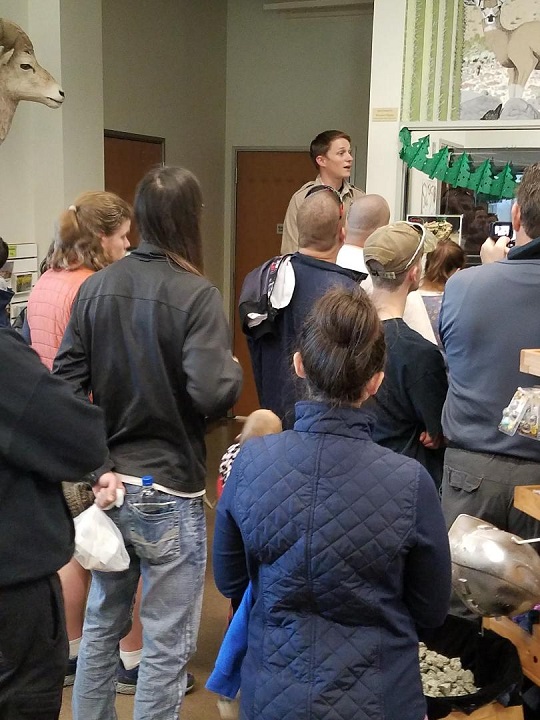
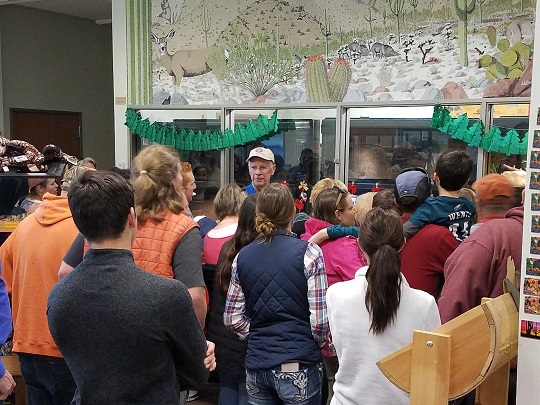
Because this event is generally attended by a large and varied group, we assume that these animal lovers understand the food chain and the fact that snakes, which are carnivores, must eat meat. Most people, however, have never witnessed the feat a snake performs in getting food into its mouth without hands. Consequently, it’s an education that’s met with many “Ooooohs!” and “Ahhhhhs!”
Our Snakes
We carry three of our own snakes from home to each of the feeding times and bring them out after feeding to allow visitors a close-up experience with these reptiles. Chuck and I each hold one snake, while Ranger Justin holds the third. Adults appear as much, and sometimes more, excited to encounter a live animal outside of its cage than children do. Many have never before touched a snake or even stood close to one, and they often have many questions and comments.
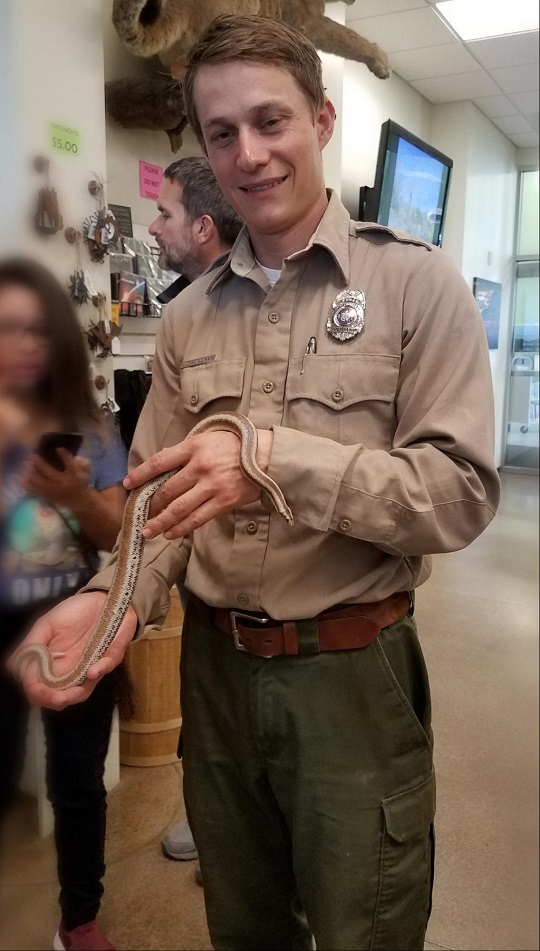
Questions and Comments
“Are there venomous snakes in this area?” “Wow! She’s so soft!” “How long do snakes live?” “I didn’t know they are so dry!” “Can you identify this snake?” Pictures captured of snakes on the trail offer us the opportunity to identify the species and add to the list of observations made by hikers.
Feeding time lasts 15 or 20 minutes, but many visitors remain much longer for these personal experiences and leave with a renewed or reinforced appreciation of an oft-reviled species.
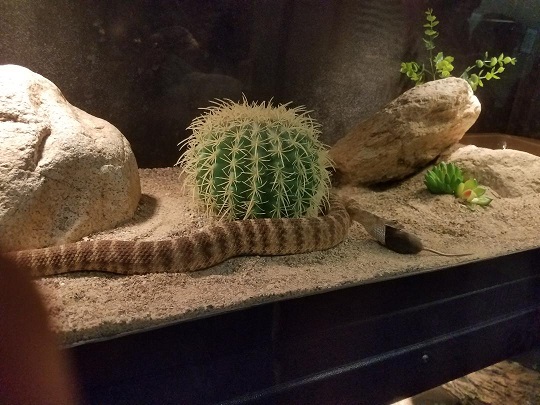

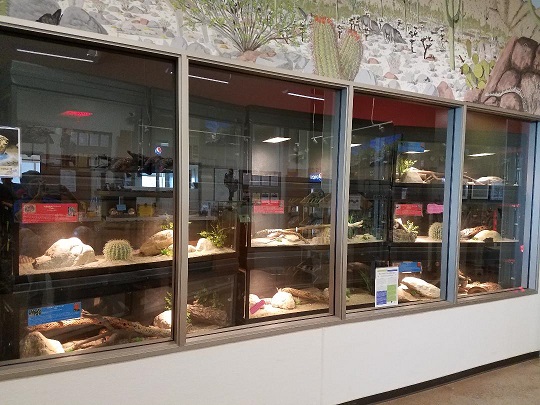
Great article. Glad you are spreading good inf whereever you are. HAPPY BIRTHDAY, Betty.